Longford Tasmania
We were in Tasmania last month and could not resist a stop in Longford to take a look at the old circuit which closed in 1968 and hosted the Australian Grand Prix in 1959 and 1965. Today a lot of it still exists and is quite accessible although a continuous lap is impossible. Frank Gardner was in awe of the place and said it made the Nürburgring look quite safe. These photos show the Tannery Straight, Tannery corner and what remains of the run up to the Long Bridge and Newry corner
Below: Tannery Straight Looking North:

Below: Tannery Straight Looking South:
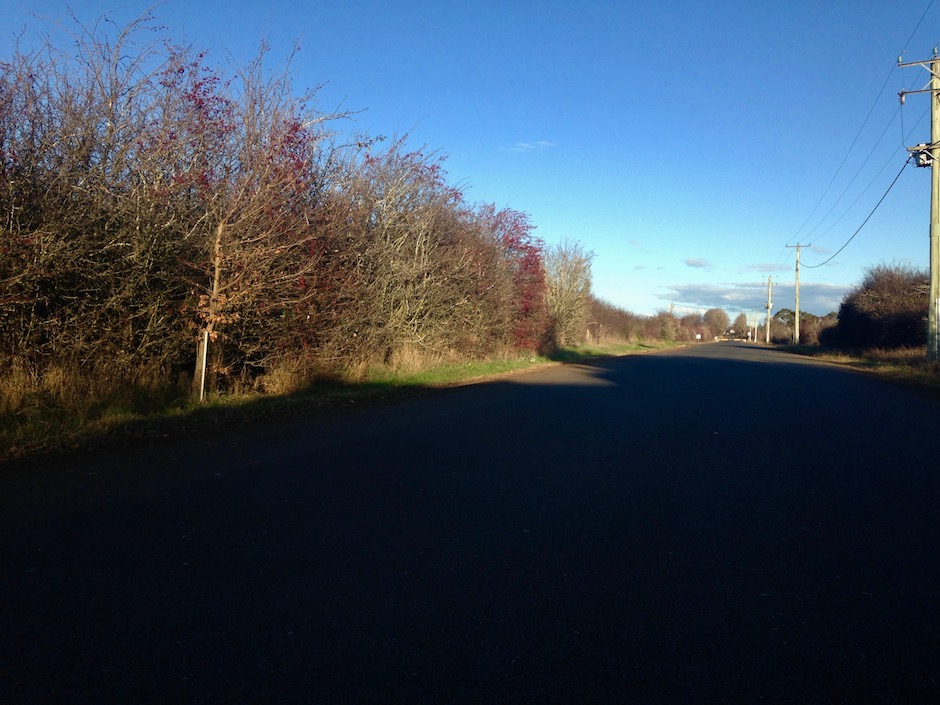
Below: Tannery Straight Looking South from Tannery Corner:

Below: Tannery Corner:
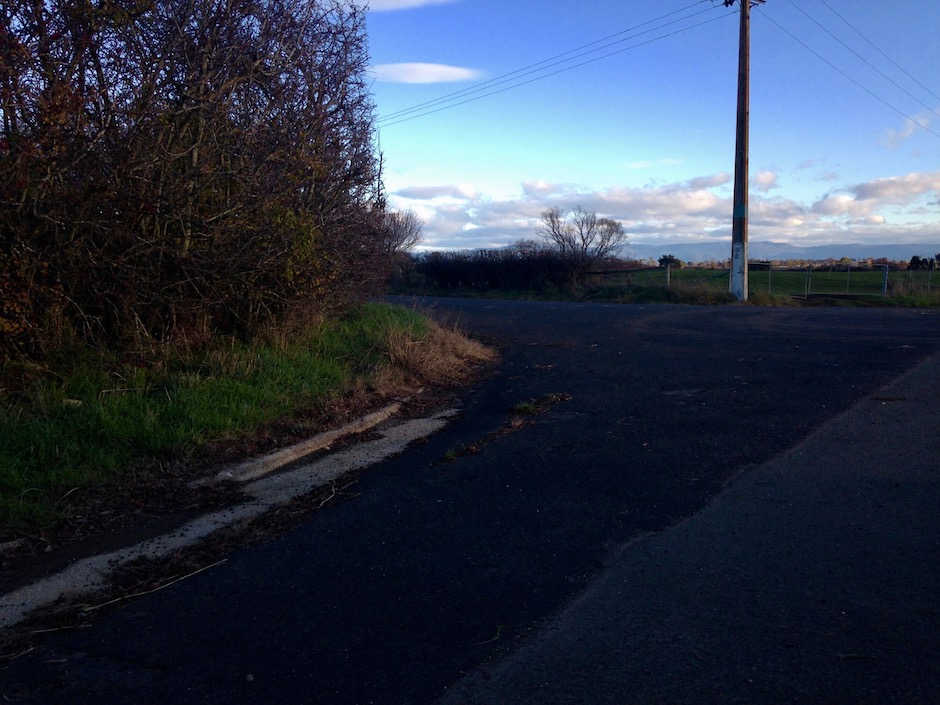
Below: The Run up to Long Bridge:

Long Weekend at Longford 1964
Inspired by our visit to Longford this film 'Long Weekend at Longford' (1964) shows motor racing at its best. Through the streets and around the houses as international stars and local drivers compete for racing honours.
Panasonic Jaguar Racing
Panasonic Jaguar Racing earned its first championship points in style after a thrilling race where Mitch Evans and Adam Carroll finished in P4 and P8 respectively, in only the fourth FIA Formula E race for the British team.
The Jaguar duo scored 16 points and leaped one position in the Team Standings to ninth place.
The Jaguar I-TYPEs started alongside each other in P10 and P11 on the grid, and quickly got to grips with the warm and dusty circuit in the heart of Mexico City.
Both drivers stayed cool amidst the chaos around them to consistently battle within the top ten points-scoring places.
Mitch and Adam efficiently managed their race strategy, pit stops and energy, with Evans surviving heavy contact from a spinning competitor in the closing stages, to record a double points finish and the best result to date in the team’s debut season and learning year.
The newest team to join the all-electric Championship, Panasonic Jaguar Racing has worked hard between races, improving with each event by refining both the set-up of the cars and the team’s operations to the unique demands of a Formula E race day.
James Barclay, Team Director, Panasonic Jaguar Racing: “A great result for the team. We had a solid strategy today and kept our cool by managing our energy and racing hard. We’ve made another step forward since Buenos Aires and have learnt more valuable lessons. Both Adam and Mitch raced really well and showed pace when they needed to. To get ourselves to this position after only four races is a good sign of what is to come but we are very realistic on what we need to build on. It is a huge boost for everyone in the team and has put a skip in everyone’s step. For a new team it gives you energy and it is a bit of payback for the long hours and effort that everyone has put in. Monaco is going to be a really interesting race with both Mitch and Adam having raced in the principality before and we can’t wait to get to the European leg of the championship.”

Mitch Evans, #20: “ Today was a crazy race from lap one. I managed to overtake Esteban Gutierrez on the straight and lined up behind Adam. After the first safety car we got into a nice rhythm and I ran on really good energy levels and a strong pace. Adam and I were on slightly different strategies, which opened up the opportunity for me to overtake him. The race got quite juicy towards the end with both Mahindra cars and Nico Prost crashing into each other, I don’t know how my I-TYPE didn’t sustain any damage. I was very lucky. To finish with double points today is huge for the team. We came so close in Buenos Aires and everyone has worked incredibly hard since then, so it’s a massive reward for everyone at Panasonic Jaguar Racing.”

Adam Carroll, #47: “For our fourth race ever, it’s a really positive day and reward for some long days. It’s a complete team effort and a fantastic day for Panasonic Jaguar Racing. Hopefully this is the start of more to come but we are also keeping our feet on the ground and we still have a lot to learn in this championship. The reality is this championship is very competitive, so to just score points, especially for a new team is a big achievement. So for both of us to score points today is absolutely brilliant."
Round five of the FIA Formula E Championship will take place in Monaco on 13 May.
Mark Skaife technical feature on 1991 Bathurst 1000 winning Nissan GT-R R32
Our favourite video of the month is Mark Skaife showing Michael Caruso around the car he drove to victory in the 1991 Bathurst 1000, the legendary Nissan GT-R R32. Amazing how technically advanced this 26 year old car is, no wonder it changed the landscape of Australian motorsport forever.
The story behind the McLaren F1 and its record-breaking 240.1mph top speed
It’s been 25 years since the McLaren F1 first redefined what was possible in a road car. To celebrate this momentous anniversary, McLaren produced this film of the story behind Andy Wallace and his incredible record-breaking 240.14mph top speed run.
Aston Martin to produce continuation DB4 GT
Following in the footsteps of Jaguar, Aston Martin are to resurrect the iconic DB4 G.T. with a special series of 25 track-only continuation cars built to lightweight specification by Aston Martin Works at Newport Pagnell.

Launched in 1959, the DB4 G.T. is one of the rarest and most revered of all Aston Martins. Evolved from the production DB4 and introduced in the same year Aston Martin scored its historic outright win in the Le Mans 24 Hours, the DB4 G.T. was a true supercar of its day. Shorter, lighter, sleeker and with a more powerful version of the legendary 3.7-litre straight-six engine, not only was the DB4 G.T. Britain’s fastest passenger sports car, it was a born winner, scoring a debut race victory at Silverstone in the hands of Sir Stirling Moss. A total of 75 DB4 G.T.s were built between 1959 and 1963. Of these only eight were lightweight – models most of which survive today – and values now comfortably exceed £3m according to Aston Martin.
Remaining faithful to the design of those original eight factory lightweights, each DB4 G.T. continuation will be built by Aston Martin Works employing a blend of old world craftsmanship and modern techniques. Continuation cars benefit from improvements in engine performance, handling, braking and safety, with great care taken to ensure these enhancements build upon the original’s exceptional qualities while retaining its feel and character.
Underlining that authenticity are the continuation car VIN numbers, which carry on from the last original DB4 G.T. ordered – Chassis 0202R.
At its heart is a version of the celebrated Tadek Marek-designed straight-six cylinder engine with two spark plugs per cylinder, transmitting its 340bhp to the rear wheels through a four-speed manual transmission and limited-slip differential, just as in the original DB4 G.T. Thanks to its shortened wheelbase the DB4 G.T. is a strict two-seater blessed with greater agility than the regular four-seater DB4. Its body follows the original construction, with thin-gauge aluminum panels fitted over a tubular frame. To improve the accuracy and consistency of the panels, the continuation car’s bodywork uses state-of-the-art digital technology, before being hand-finished in time-honoured tradition.
The DB4 G.T. Continuation is built to be enjoyed on track. Aston Martin Works has created a two-year international track driving programme held at a number of the world’s finest race tracks, including the spectacular Yas Marina circuit in Abu Dhabi. Billed as the ultimate arrive-and-drive experience (although try telling that to Aston Martin’s Vulcan clients) customers may also take advantage of Aston Martin’s dedicated driver training team. Comprised of expert instructors, including Aston Martin Racing’s multiple Le Mans class winner (and Goodwood Revival regular) Darren Turner, they will help customers master driving techniques from an era when track driving was more art than science.
Le Mans Classic
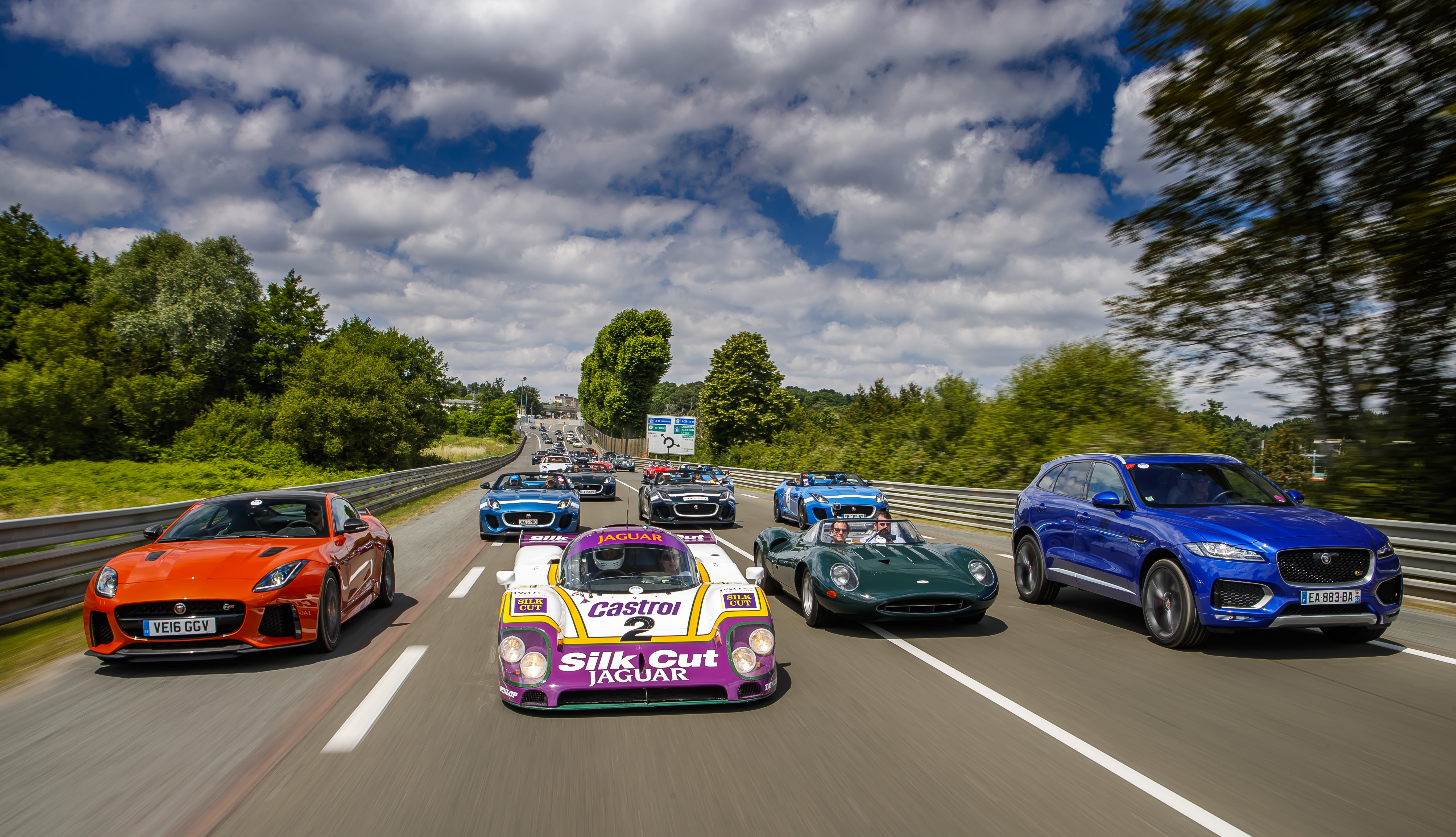
Le Mans winner outright for Jaguar in 1988, was on the podium again at the famous circuit as a record grid of 65 pre-1966 racing Jaguars took part in the Le Mans Classic round of the Jaguar Classic Challenge.
Wallace, whose '88-winning XJR-9 wowed the crowds during the 100-strong Jaguar parade lap which preceded the race, finished third overall in the Jaguar Classic Challenge and won his class racing a 1955 D-type. Julian Thomas won the race outright in his 1962 low-drag E-type.
Also part of the 100-strong parade before the race were Jaguar's one-off Le Mans prototype, XJ13, and a dozen examples of its latest and fastest production car, the 575PS, 200mph F-TYPE SVR created by Jaguar's Special Operations division.
The Italian Job 1969
The opening scene from The Italian Job, Lamborghini Miura through the Great St. Bernard Pass... Damn Mafia!
A wild sideways run in the ex-Fangio C-Type
Join Chris Ward on a wild run in the 2015 Bernina Granturismo driving the ex-Fangio C-type as he slides his way to second place overall.
Jaguar to Build 9 remaining Jaguar XKSS as continuation model
Jaguar is to build the stunning XKSS as an ultra-exclusive continuation model.
Nine new XKSS's - often referred to by experts as the world's first supercar - will be hand built by Jaguar Classic to the exact specification as they appeared in 1957, replacing the cars lost due to the famous Browns Lane factory fire.
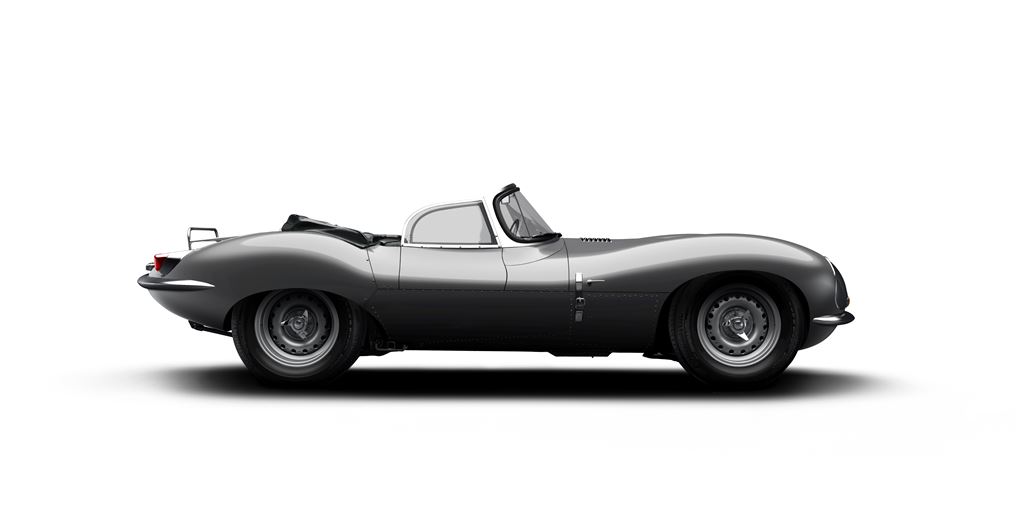
Tim Hannig, Director, Jaguar Land Rover Classic, said: "The XKSS occupies a unique place in Jaguar's history and is a car coveted by collectors the world over for its exclusivity and unmistakable design.
"Jaguar Classic's highly skilled team of engineers and technicians will draw on decades of knowledge to ensure each of the nine cars is completely authentic and crafted to the highest quality.
"Our continuation XKSS reaffirms our commitment to nurture the passion and enthusiasm for Jaguar's illustrious past by offering exceptional cars, services, parts and experiences."

The original cars were earmarked for export to the USA, however, just 16 were completed before disaster struck. Now 59 years later, Jaguar is going to build the nine 'lost' XKSS sports cars for a select group of established collectors and customers.
The expertise gained during the construction of the Lightweight E-type project will be transferred to the construction of the nine ultra-exclusive continuations. Each one will be hand-built at Jaguar's new 'Experimental Shop' in Warwick.
Every car will be constructed to the same specifications as those first 16 made in 1957 - every aspect fully certified by Jaguar. The price will be in excess of £1 million.
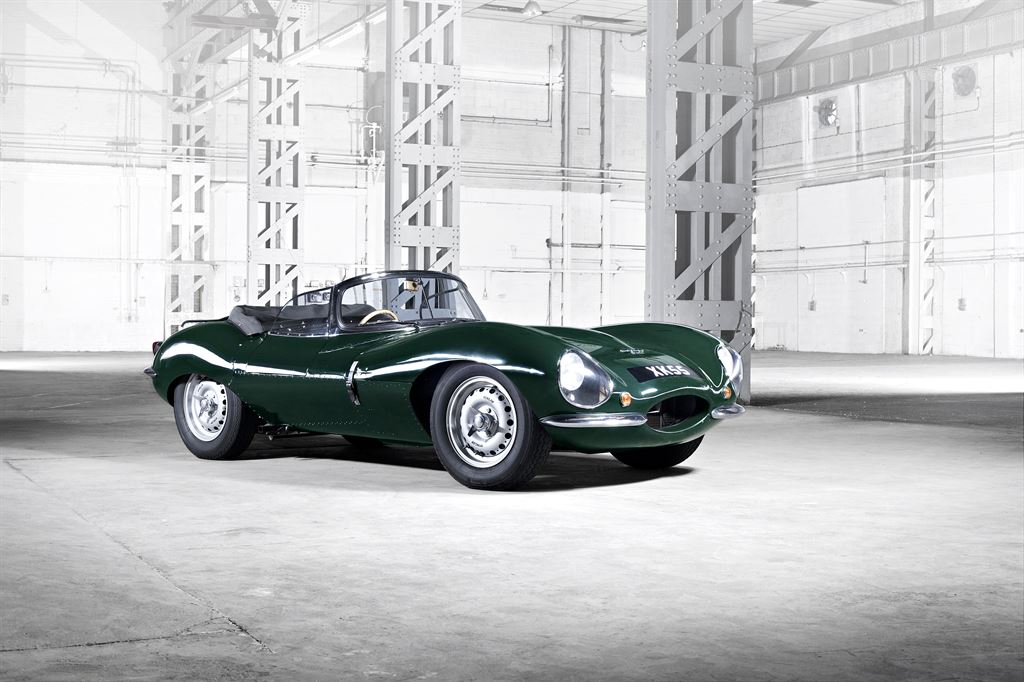
The story of the XKSS began following Jaguar's three successive Le Mans victories in 1955, 1956 and 1957 with the all-conquering D-type.
After the hat-trick of wins, Sir Williams Lyons took the decision on 14 January 1957 to convert the remaining 25 D-types into road-going versions with several external modifications - creating the world's first super car.
These modifications included the addition of a new higher windscreen, an extra door on the passenger side, taking away the divider between driver and passenger and the removal of the famous fin behind the driver's seat.
The first deliveries of the new continuation Jaguar XKSS will commence in early 2017.

